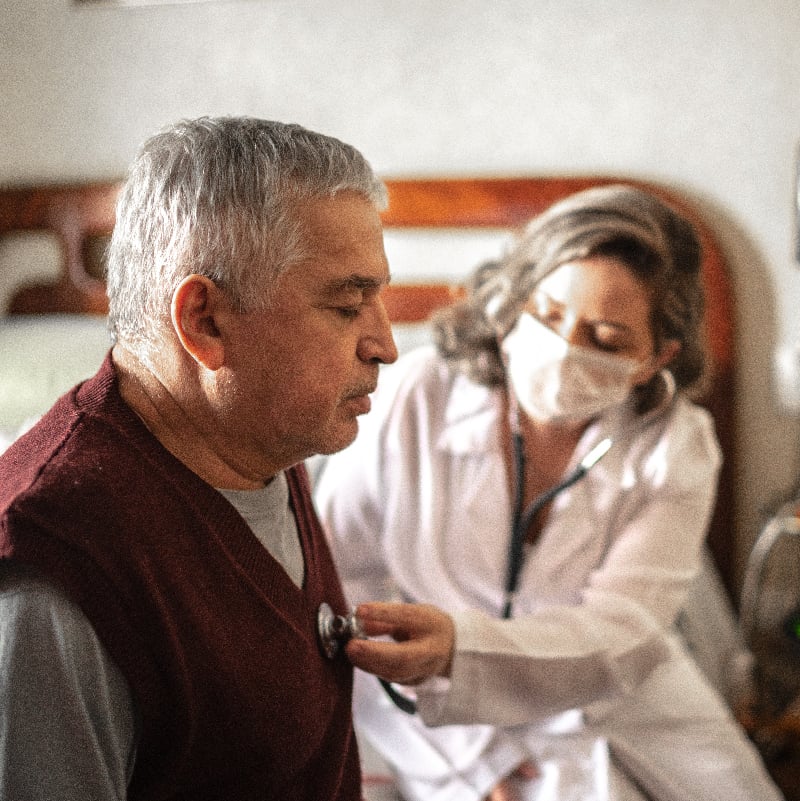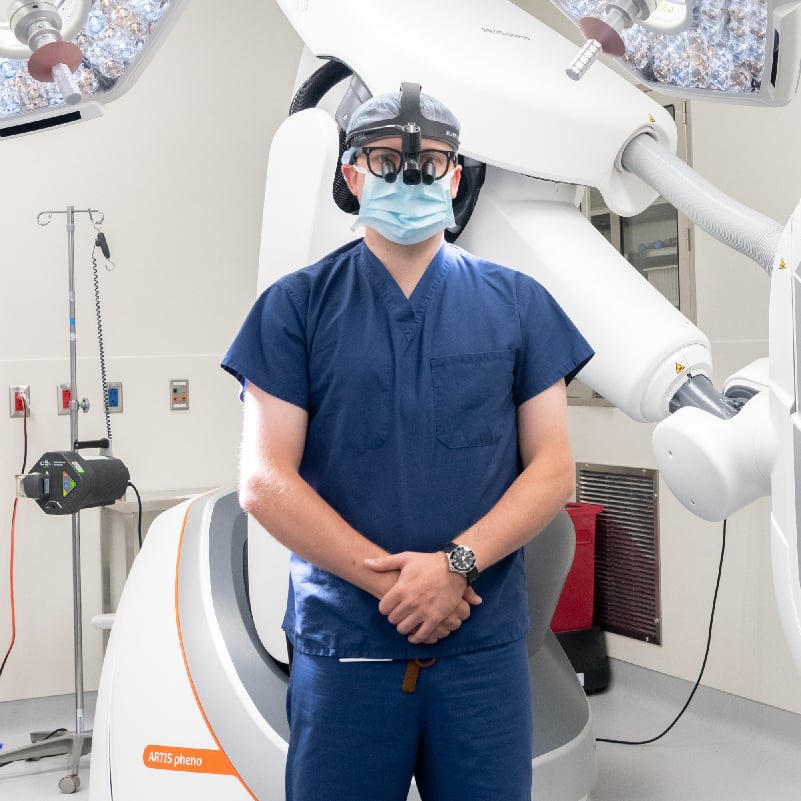Heart failure is the top cause of hospitalization for adults over the age of 65. One in five adults living in the U.S. will develop heart failure in their lifetime, according to some estimates.
For most heart failure patients, symptoms such as shortness of breath, fatigue, and/or fluid retention (edema) are common. If left untreated for too long, excess fluid buildup can lead to emergency department visits.
Scott Feitell, DO, is the Director of Heart Failure and the Cardiac Intensive Care Unit with Rochester Regional Health and explains how a new monitoring device can help patients keep track of their fluid levels and potentially avoid unexpected hospital visits.
Enroll In Our FIRE1 System Clinical Trial
Heart failure and fluid retention
The term ‘heart failure’ refers to the medical condition when a patient’s heart muscle is too weak or stiff to pump enough blood throughout the body to meet its needs.
When the body isn’t circulating blood as quickly as usual, blood and other fluids can start to pool or build up in different areas. Some of the areas where fluid is retained most often include:
- feet
- lower legs
- hands
- abdomen
If left untreated for too long, fluid retention can cause painful swelling and lasting damage. Increased chest pain and shortness of breath are signs that more fluid is building up and might be retained in the lungs.
“Properly managing heart failure symptoms like edema is key to ensuring the long-term health of heart failure patients, “Dr. Feitell said. “The sooner a provider is aware that a patient’s fluid volume is starting to build up, the more quickly we can treat them and hopefully avoid any complications before they arise.”
How FIRE1 helps heart failure patients
A new clinical trial currently underway aims to help patients lessen their risk of heart failure-related hospitalization by better measuring the volume of fluid in their body.
The FIRE1 system being studied in the clinical trial is a small implantable sensor that measures and tracks fluid levels in the largest vein in the body where most fluid is stored called the inferior vena cava (IVC). A patient will undergo a minimally-invasive procedure to implant the sensor, then typically go home from the hospital on the same day.
Once the patient returns home, they wear a special belt for a few minutes each day to download data that is then sent to their providers. The fluid volume data is then analyzed to determine whether the patient’s medication should be adjusted or if they should see their provider to control their fluid status.
Rochester Regional Health is one of the first health systems in the United States to study the FIRE1 system. Available information about the FIRE1 system trial is published on the National Institutes of Health Clinical Trials website.
The goal of the FIRE1 device is to make it easier for people living with heart failure to monitor and control the amount of fluid in their body so they can identify a rising risk for an emergency department visit before it happens. Early studies show this approach for monitoring fluid volume is promising.
“By helping our patients to monitor their fluid levels in the same way diabetes patients monitor their glucose levels, we hope to make their daily lives easier,” Dr. Feitell said.










